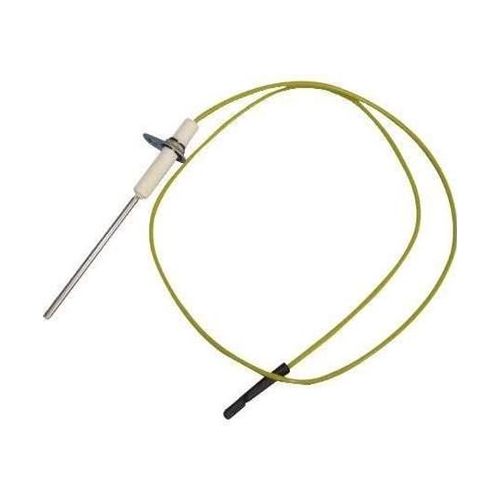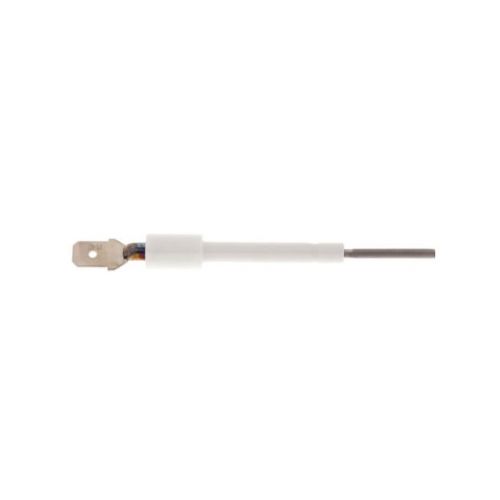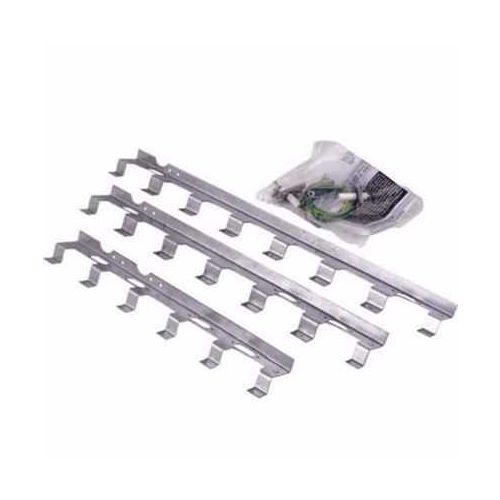Common Goodman Flame Sensor Problems and How to Resolve Them Like a Pro
A Goodman flame sensor is an essential component of your HVAC system that detects whether a flame is present, ensuring the furnace operates safely. If the sensor malfunctions, it can cause the furnace to fail to ignite or to shut off unexpectedly, leading to discomfort and inconvenience. Common issues with Goodman flame sensors include dirt buildup, corrosion, or wiring problems, which can disrupt accurate flame detection. Being able to recognize and fix these issues yourself can help you save time, reduce expenses, and avoid unnecessary visits from repair technicians. In this guide, we’ll walk you through typical Goodman flame sensor issues and provide clear, professional tips to troubleshoot and fix them. Whether you’re a homeowner or a DIY enthusiast, mastering these solutions will keep your Goodman furnace running smoothly and efficiently all season long.
Understanding the Role of the Goodman Flame Sensor
The Goodman furnace flame sensor serves as a vital safety component. Its main job is to confirm that a flame is present when the furnace is running, ensuring safe and efficient operation. What you need to know about its function is as follows:
-
Identifies the Presence of Flame: The sensor continuously verifies if the burner flame is ignited. If it doesn’t detect a flame, it prevents gas from flowing, avoiding unburned gas leaks.
-
Ensures Safety: By shutting off the gas supply when no flame is detected, the sensor helps protect your home from potential fire hazards or explosions.
-
Maintains Furnace Efficiency: A working flame sensor keeps the furnace running smoothly by preventing unnecessary shutdowns caused by false flame detection.
-
Communicates with Control Board: The sensor notifies the furnace's control board of the flame's presence, which permits the gas valve to remain open.
-
Triggers Automatic Shutdown: If the flame sensor fails to detect the flame, it signals the system to shut down the gas flow immediately.
The Goodman flame sensor is a vital safety device that ensures reliable heating by detecting the flame and preventing gas leaks. Regular cleaning keeps your furnace running smoothly.
Ready to fix your furnace with replacement parts? PartsHnC offers essential components, including flame sensors, burners, and gas valves. With top brands like Goodman, Carrier, and International Comfort Products, you can keep your heating system running efficiently. Get the right parts fast and get your furnace back to perfect working order!
Signs of a Faulty Flame Sensor in Goodman Furnaces
Several warning signs are frequently produced by a malfunctioning flame sensor. If you notice any of these issues, it may be time to inspect or replace your Goodman furnace flame sensor:
-
Furnace Starts and Shuts Off Quickly (Short Cycling): The furnace repeatedly turns on and off because the sensor fails to detect a steady flame.
-
Cold Air Blows from Vents When the Heat is On: Unheated air circulates because the furnace isn’t staying lit properly.
-
Heating Performance is Intermittent: The heating cycles are inconsistent and unpredictable.
-
Furnace Won’t Stay Lit After a Few Seconds: The flame goes out soon after ignition, leading the furnace to turn off.
-
Frequent Need to Reset the Furnace: The system requires constant manual resets after safety shutdowns.
-
Error Codes Indicate Flame Detection Failure: The furnace control board displays error codes related to flame sensor problems.
These signs usually indicate a dirty, corroded, or faulty flame sensor that needs attention to prevent discomfort and inefficiency.

Causes Behind Goodman Flame Sensor Failures
Flame sensor failures in Goodman furnaces are often due to dirt, damage, or misalignment. Understanding the root causes helps ensure proper repairs.
-
Carbon or Soot Buildup: Over time, the flame sensor can accumulate a layer of carbon or soot, preventing it from accurately detecting the burner flame.
-
Corrosion or Rust: Moisture inside the furnace or prolonged exposure to high humidity can lead to rust or corrosion on the sensor's metal surface, interfering with signal transmission.
-
Cracked or Damaged Sensor Rod: Physical damage or aging can cause the ceramic or metal rod to crack, reducing its ability to detect flame.
-
Damaged or Loose Wiring: Communication between the sensor and the control board may be disrupted by worn-out or disconnected wires, which could lead to sensor failure.
-
Improper Sensor Positioning: If the flame sensor is not properly aligned with the burner flame, it may not detect it correctly, triggering shutdowns.
-
Electrical Interference: Nearby electrical components or grounding issues may disrupt the sensor’s signal, leading to false readings.
Your flame sensor's lifespan can be increased, and these problems can be avoided with routine examination and maintenance.
Check out this guide on Goodman furnace troubleshooting to better understand how to diagnose and fix common furnace issues efficiently.
Essential Tools and Safety Precautions for Goodman Flame Sensor Troubleshooting
Before starting any DIY troubleshooting on your Goodman flame sensor, it's important to gather the proper tools and follow key safety steps to protect yourself and your system.
Tools Required:
-
A flathead or Phillips screwdriver
-
Socket wrench set or nut driver
-
Steel wool or fine-grit sandpaper (for cleaning the sensor)
-
Multimeter (for furnace flame sensor testing to check electrical continuity)
-
Soft brush or clean cloth (to wipe dust and debris)
Safety Precautions:
-
Turn off the furnace using the thermostat.
-
Cut power to the furnace at the main breaker.
-
Shut off the gas supply if necessary.
-
Let the furnace cool completely before opening or handling parts.
-
Always follow safety guidelines. Gas appliances can be hazardous.
If you're ever unsure during the process, it's safest to contact a licensed HVAC technician to avoid injury or damage to your furnace.
Step-by-Step Process to Clean a Goodman Flame Sensor
Cleaning the flame sensor is a key step in Goodman flame sensor troubleshooting, helping to resolve ignition issues and ensure your furnace operates reliably. Follow these simple steps to clean and maintain the sensor effectively.
Step 1: Turn Off Power and Gas Supply
-
Turn Off Thermostat: Shut off the furnace using the thermostat controls.
-
Cut Power: To prevent electric shock, turn off the furnace's electricity at the breaker box.
-
Shut Off Gas: Close the gas supply valve to prevent leaks or accidents.
Step 2: Locate the Flame Sensor
-
Open Access Panel: Remove the furnace’s front panel to access internal components.
-
Identify the Sensor: Look for a thin metal rod with a single wire, typically near the burner.
-
Check the Manual: If needed, refer to your furnace manual for the exact location.
Step 3: Remove the Flame Sensor
-
Unscrew Mounting Screw: To remove the screw securing the sensor, use a screwdriver or nut driver.
-
Gently Pull Sensor Out: Carefully remove the sensor without straining the attached wire.
-
Avoid Damage: Handle the sensor gently to prevent bending or cracking.
Step 4: Clean the Sensor Rod
-
Use Sandpaper or Steel Wool: Lightly rub the metal rod to remove carbon buildup and corrosion.
-
Clean Just the Metal Rod: Avoid scrubbing the ceramic portion of the sensor.
-
Handle with Care: Use gentle pressure to prevent any damage to the sensor.
Step 5: Wipe Away Debris
-
Use a Soft Cloth or Brush: Gently wipe the rod to remove loose particles.
-
Ensure it’s Dry: Make sure the sensor is completely clean and dry before reinstalling.
Step 6: Reinstall the Flame Sensor
-
Place Sensor Back: Insert the flame sensor into its original position.
-
Secure the Screw: Tighten the mounting screw firmly but without over-tightening.
-
Check Alignment: Ensure the sensor is properly aligned with the burner flame.
Step 7: Turn the Power Back On and Check the Furnace.
-
Turn Gas and Power Back On: Reopen the gas valve and flip the power breaker on.
-
Set Thermostat to Heat: Adjust the thermostat to trigger the furnace.
-
Observe Operation: Watch to confirm the furnace ignites and runs smoothly without shutting off.
Check out this guide on how to clean a furnace heat exchanger to improve your system’s efficiency and extend its lifespan.
When to Replace the Goodman Flame Sensor
Knowing when to replace your Goodman flame sensor is crucial for maintaining safe and efficient furnace operation. Here are the key signs that indicate it’s time for a replacement.
The following are the main signs that your Goodman flame sensor needs to be replaced:
-
Repeated Cleaning Has No Effect: If cleaning the sensor doesn't resolve issues like short cycling or ignition failure, the sensor may be too worn or damaged to function properly.
-
Visible Damage or Corrosion: Cracks in the ceramic base, heavy rust, or corrosion on the rod are signs that the sensor is no longer reliable and should be replaced.
-
Sensor Fails Continuity Test: Using a multimeter, if the sensor doesn’t show continuity, it’s no longer conducting electricity properly and needs to be replaced.
-
Frequent Furnace Shutdowns: If your furnace keeps shutting off even after cleaning and troubleshooting, the flame sensor might not be sending a consistent signal.
-
Sensor is Aged or Original to the Unit: Flame sensors typically last 5–10 years. If yours is old or original to the system, preemptive replacement can help avoid sudden failures.
Replacing the flame sensor at the right time ensures reliable furnace performance and reduces the risk of unexpected heating interruptions.
Preventing Future Goodman Flame Sensor Problems
Preventing flame sensor problems in your Goodman furnace helps ensure safe and efficient heating. Simple regular maintenance can save you from costly repairs and unexpected breakdowns.
To avoid future flame sensor issues in your Goodman furnace, follow these key preventive steps:
-
Regular Cleaning: Clean the flame sensor at least once a year using fine-grit sandpaper or steel wool to remove dirt, dust, and carbon buildup that can block flame detection.
-
Check for Corrosion or Damage: Inspect the sensor for rust, cracks, or other damage caused by moisture or wear, and replace it promptly if needed.
Ensure Proper Alignment: Make sure the flame sensor is correctly positioned to accurately detect the burner flame and prevent false shutdowns. -
Keep Burners Clean: Regularly clean the furnace burners to reduce soot buildup, which can affect sensor performance.
-
Schedule Professional Inspections: Have a licensed HVAC technician perform routine maintenance to catch potential problems early and verify sensor functionality.
You can maintain dependable, effective furnace operation and extend the life of your flame sensor by following these preventive measures.
Conclusion
Regularly maintaining and promptly addressing issues with your Goodman flame sensor is essential for keeping your furnace running safely and efficiently. By recognizing common problems such as sensor dirt buildup, corrosion, or misalignment and following proper cleaning and furnace flame sensor troubleshooting steps, you can prevent costly repairs and avoid heating interruptions. When cleaning no longer resolves the issues, timely replacement of the sensor ensures reliable furnace operation. Taking these proactive measures not only extends the life of your furnace but also provides peace of mind during cold months.
FAQs
Can I replace a flame sensor myself?
Yes, if you have basic DIY skills and follow safety precautions, you can replace a flame sensor. But it's preferable to hire an expert if you're not sure.
What is the lifespan of a flame sensor?
The average lifespan of a flame sensor is five to ten years, depending on use and upkeep. Regular cleaning can help extend its lifespan.
How to clean a Goodman furnace flame sensor?
To clean a Goodman furnace flame sensor, turn off the power, remove the sensor, and gently scrub the metal rod with fine sandpaper. Avoid touching the ceramic part, then wipe it clean and reinstall.
How to tell if a furnace flame sensor is dirty?
A dirty furnace flame sensor often causes the furnace to start but then shut off quickly or fail to stay lit. You may also notice frequent cycling or error codes related to flame detection.
Where is the flame sensor on a Goodman furnace?
The flame sensor is usually located near the burner assembly, in front of one of the burners. It appears as a thin metal rod with a single wire and can be accessed by removing the front panel.












